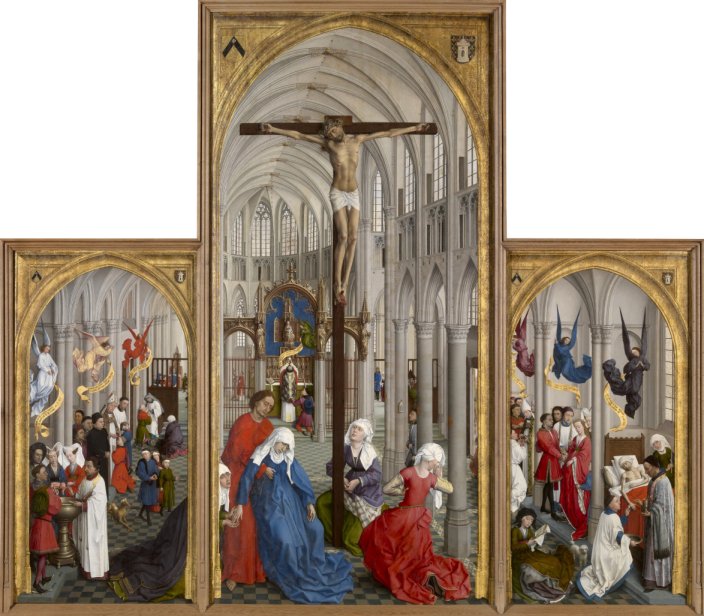
An altarpiece now in the Royal Museum of Fine Arts, Antwerp. The
original location is debated, as is the extent of the involvement by
Rogierís workshop. More interesting is the unusual theological content
of the triptych: the seven sacraments of the Catholic church. These are
baptism, confirmation, confession or penance, the eucharist, ordination,
marriage and the last rites. The work was commissioned by Bishop Jean
Chevrot, who appears in the work administering the confirmation.
The scenes are set in a gothic church, with the central scene in the
nave, and the other panels representing side chapels.
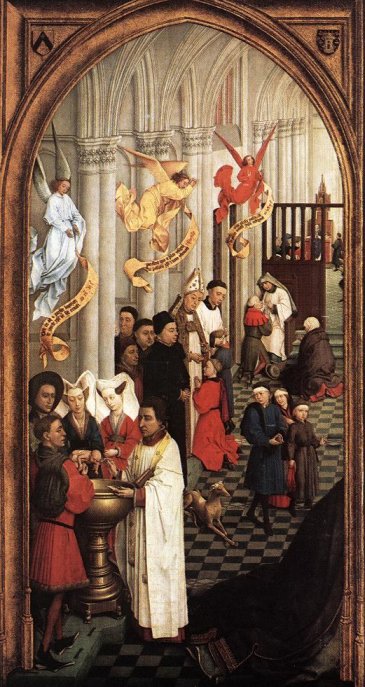
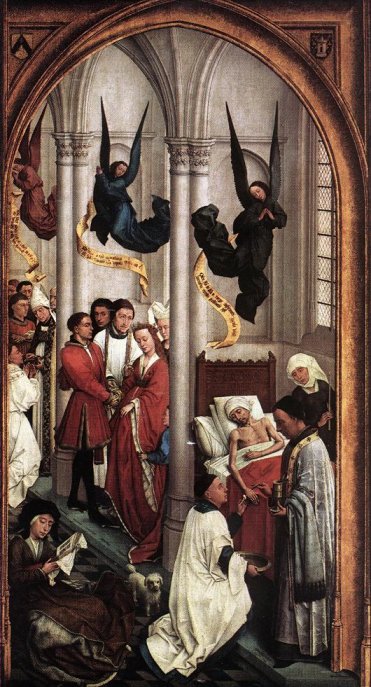
The left-hand panel shows baptism, confirmation (accompanied by a
friendly dog) and confession. The central panel shows the Eucharist
taking place behind the crucifixion, and I will look at that in more
detail below. The right-hand panel shows the ordination of a priest, a
marriage ceremony, and the last rites. A curious feature is the colour
of the clothing worn by the angels. Some comments on the painting
suggest that the colours represent the different sacraments: white for
baptism, yellow for confirmation, red for confession/penance, green for
the eucharist, purple for ordination, blue for matrimony, (with another
dog)and black for extreme unction. While the first and last make sense,
I cannot find evidence anywhere of any colour match with the other
sacraments.
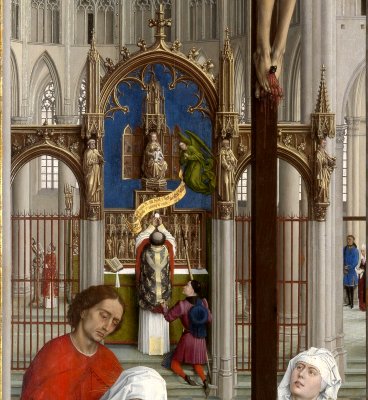
The central panel shows the crucifixion, with rather oversize images of St John and the three Marys. Behind them, we see a priest at the moment of the elevation of the host. What some may find unfamiliar are the actions of the figure behind him. What is he doing?
In his right hand he is lifting what is known as the elevation torch, a lit candle of other light source to enable the congregation in a poorly-lit church to see this important moment. His left hand his lifting the priest's chasuble. Why? The priest is required to raise the host as high as is possible, but the weight of a heavy chasuble makes this difficult. Lifting the chasuble from behind will help.
These actions do appear in medieval art. Below is a fresco attributed to Simone Martini in the chapel of St Martin, in the Lower Church of the San Francesco Basilica in Assisi. Here St Martin is celebrating the Eucharist: at the moment of the elevation two angels appear, bring clothing to replace that which he gave to the poor man. Behind him, a figure raises the elevation torch and lifts Martin's chasuble.
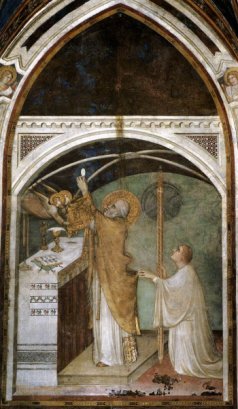
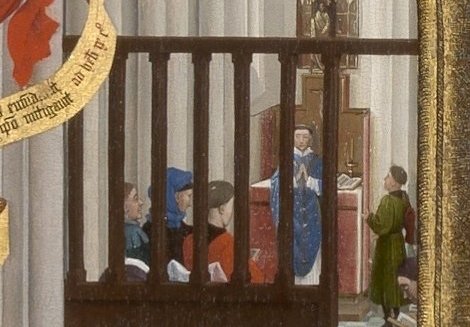
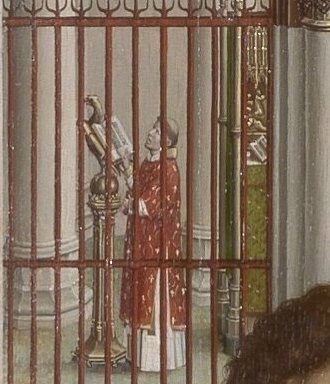
Home page - explore the site